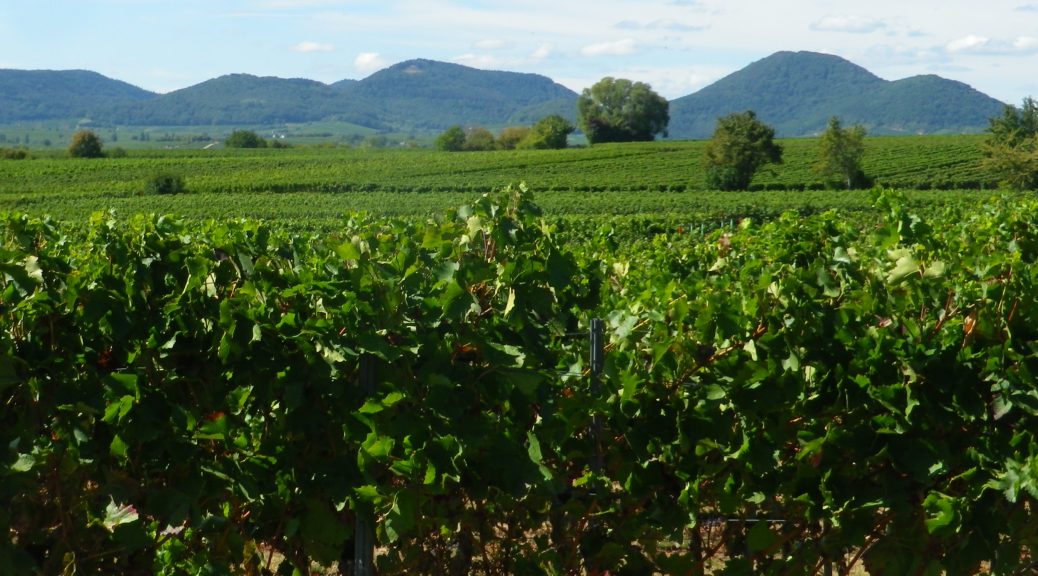As anyone who earns their living by the soil will tell you, the fields are important. As those who make their living by grapes know, each individual parcel of the vineyards is very important and rather unique. Like most vintners, those of Suedliche Weinstasse feel a deep connection with the land, and attempt to maximize the potential of the terroir and microclimate for each parcel, and carefully match that with each varietal planted. Parcels may be adjoining, or separated by a couple of kilometers. To access these, vintners use agricultural lanes, most of them as well tended as the vineyards they serve.
This bicycling itinerary led mostly along these lanes, through acres of vineyards, both in prime condition. The itinerary was called the Winzerradrundweg, or Vintner Bicycle Circuit Trail. Previously, vintners and vineyard workers, usually family, may have ridden bicycles to access distant parcels. Today though, they use cars, and compact trucks, and cyclists use these quiet lanes to explore this beautiful countryside.
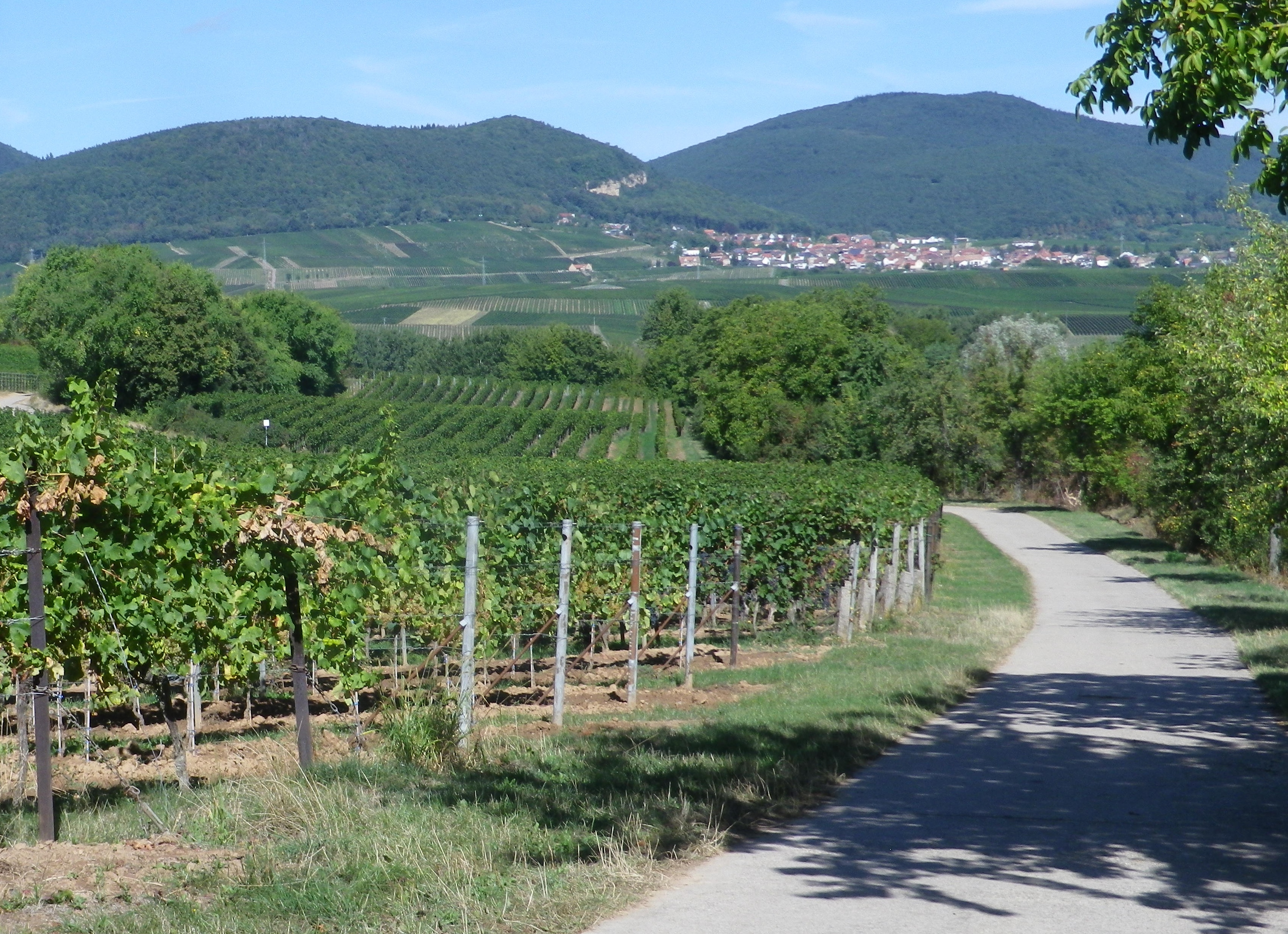
However, starting in the city of Landau in der Pfalz, the first two or three miles pass through wheat, corn and cabbage fields. There, I had my first encounter ever with a (John Deere!) farm combine. Curving upward from a steep gully, lined by high hedgerows, I first heard it, then only saw it, as it barreled down toward me on a lane rather narrow for it, let alone me and it. This thing was huge, about two stories tall! Happily, it suddenly veered to the right to begin harvesting the corn in an expansive golden field. Sadly, I didn’t get a photo. Shortly thereafter, I entered vine country, where such large machines are not used, not in Germany at least.
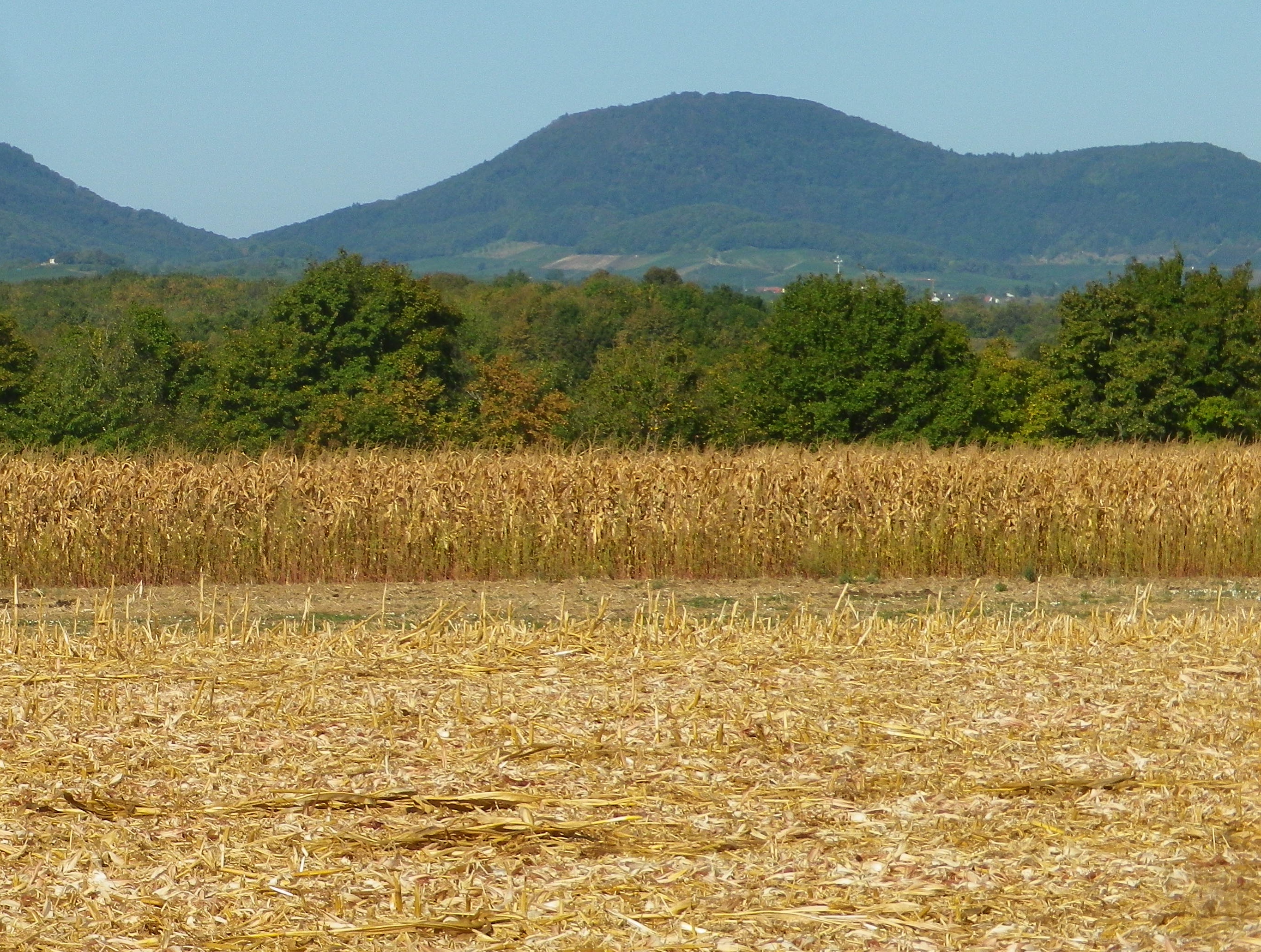
Two things to notice on this itinerary: the terrain for vines is distinctly different than the terrain for fruits and vegetables. The vineyards started where the flat fields left off, and hills or ridgelines began. The other noticeable difference was in the composition of the villages: the vintner family houses and businesses tended to be set in the villages, whereas the farmers tended to live on the edge of town.
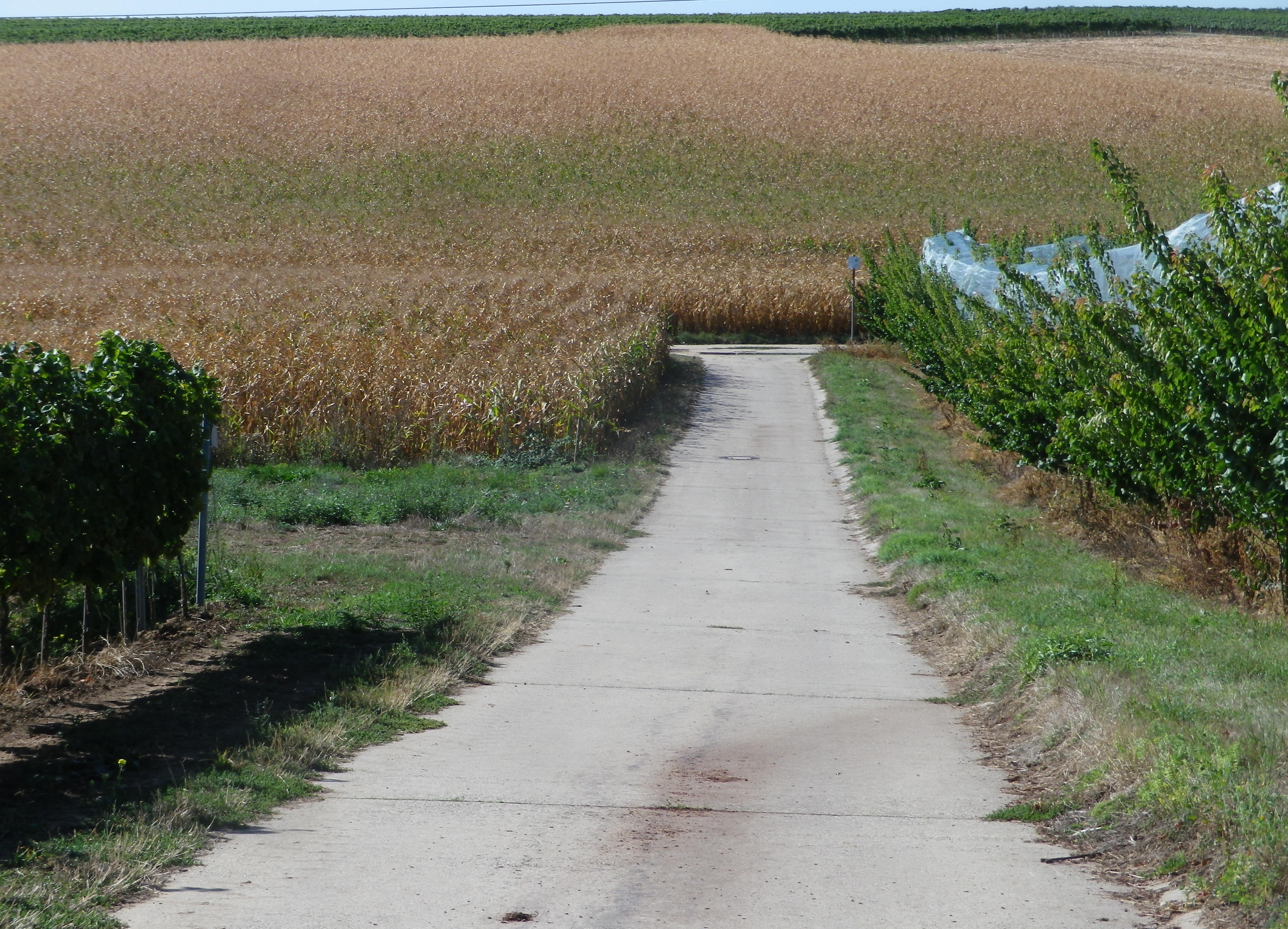
Going through the first vineyards, I noticed that harvest had yet to begin. The vegetation, last cut back weeks ago, while trim, was lush and now filled out. The grape bunches hung heavily on the vines. These vineyards while full of grapes, were empty of people. Presumably, the vintners were at the wineries, busy preparing the equipment and cellars for the harvest soon to come.
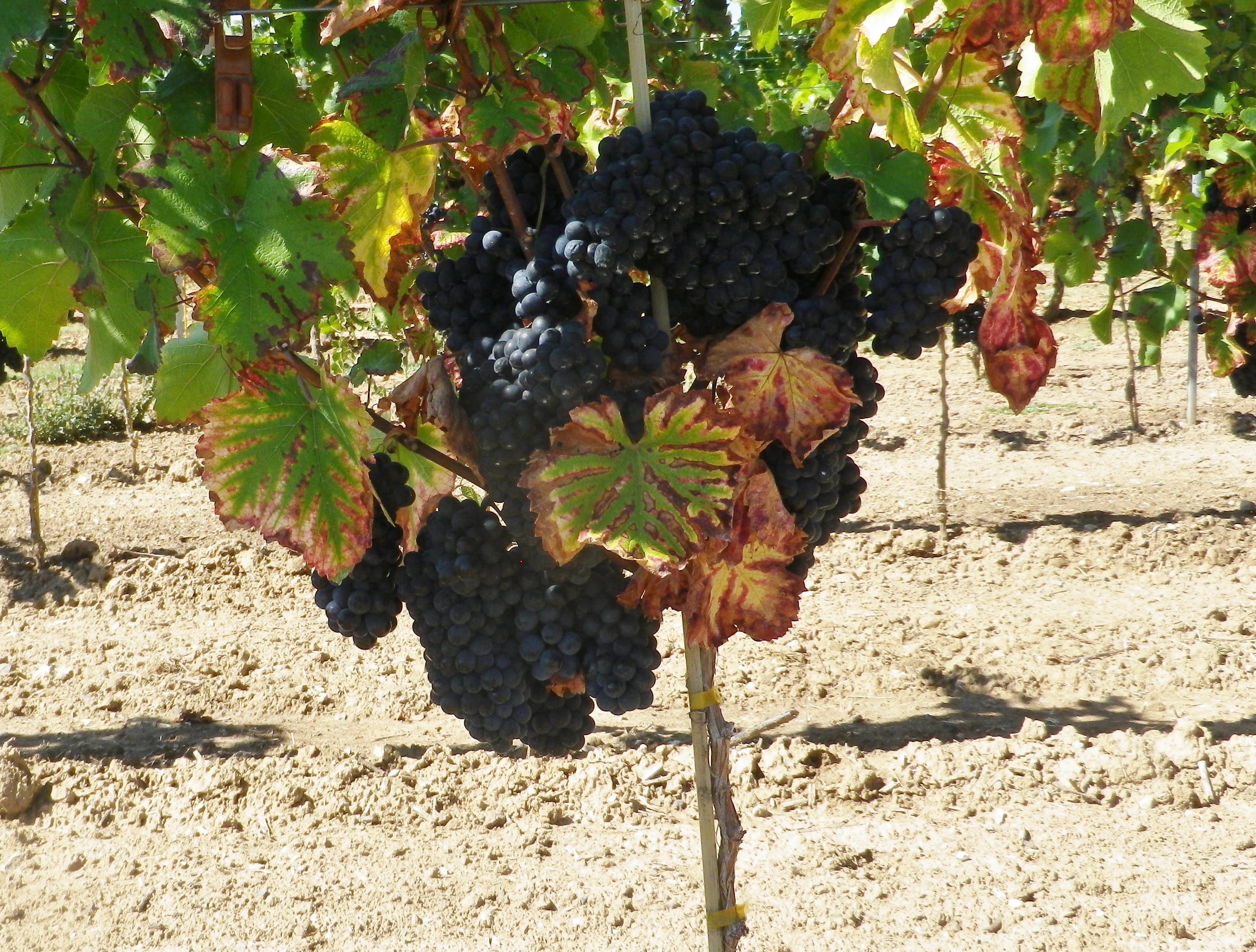
At first, the vineyards were interspersed with corn or vegetable fields in the flat areas in between. This area is one of the “garden” spots of Germany, so there is a diverse agricultural scene here. This was especially true around the villages of Insheim, Knoeringen and Dammheim. But that began to change as the trail approached the base of the Haardt mountains.
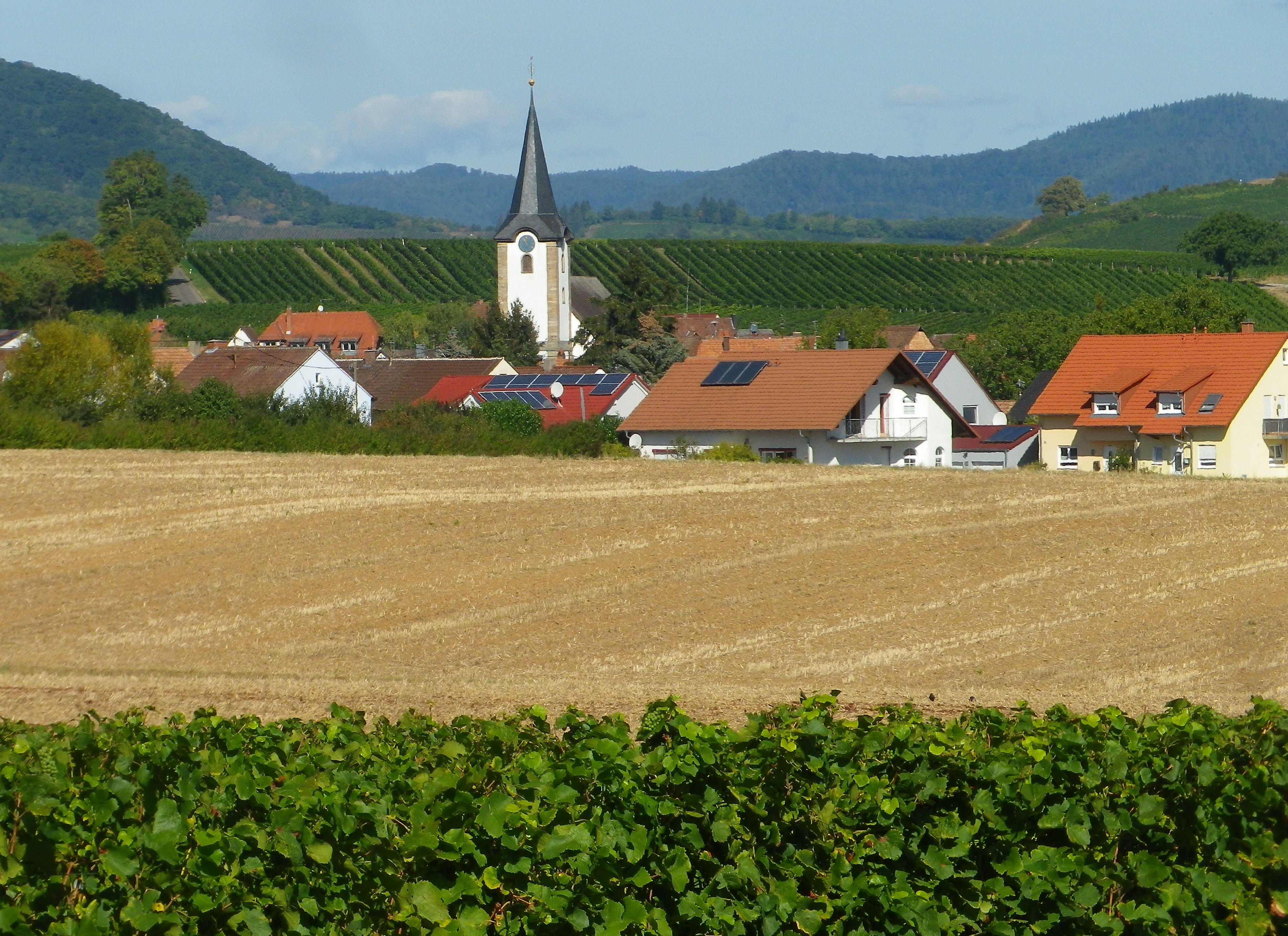
The vineyards predominate once west of the village of Moerzheim. Kilometers of vineyards, each sited with precision, arrayed magnificently along the vintner lanes, which were proving ideal for cycling. The lush green vegetation looked gorgeous under a brilliant sun and a clear blue sky. They were interrupted only by the neat and compact winemaking villages of Wollmesheim, Ilbesheim and Arzheim. Once I reached Siebeldingen, I was at the home of German grape varietal development, the Institut fuer Rebenzuechtung, where experimental new varietals are scientifically engineered, cultivated and tested every year.
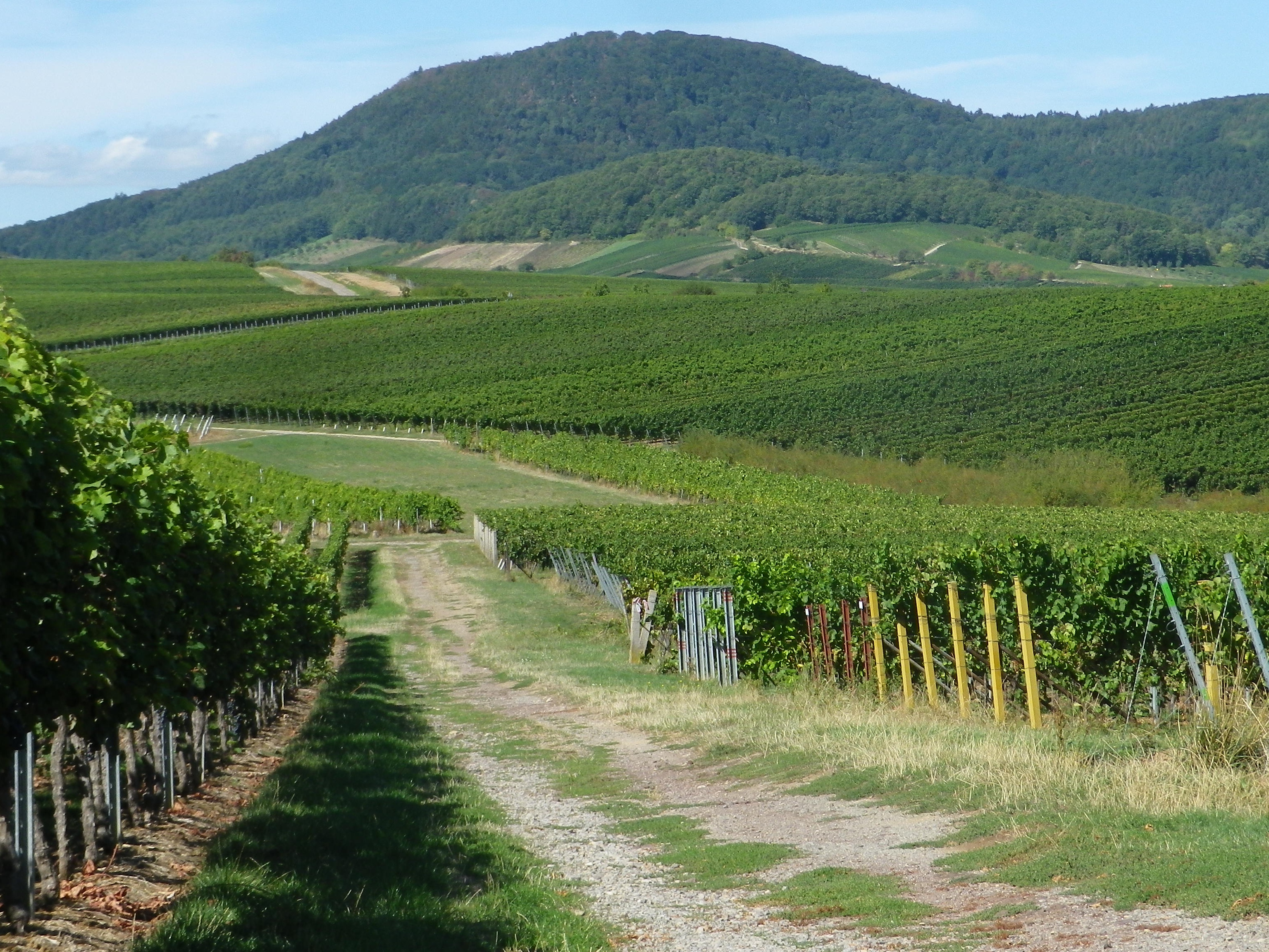
The itinerary followed up and over ridgeline after ridgeline. On top of each ridgeline, the views were tremendous. The flat lands of the Rhine River Valley stretched east to Baden-Wuerttemburg, where the base of its tree-lined ridges stood out well on this crystal-clear day. Seemingly near enough to touch, stood the Haardt mountains to the west. Some of its beloved red sandstone landmarks clearly stood out against its dark pines. There could not have been a better day for cycling this trail.
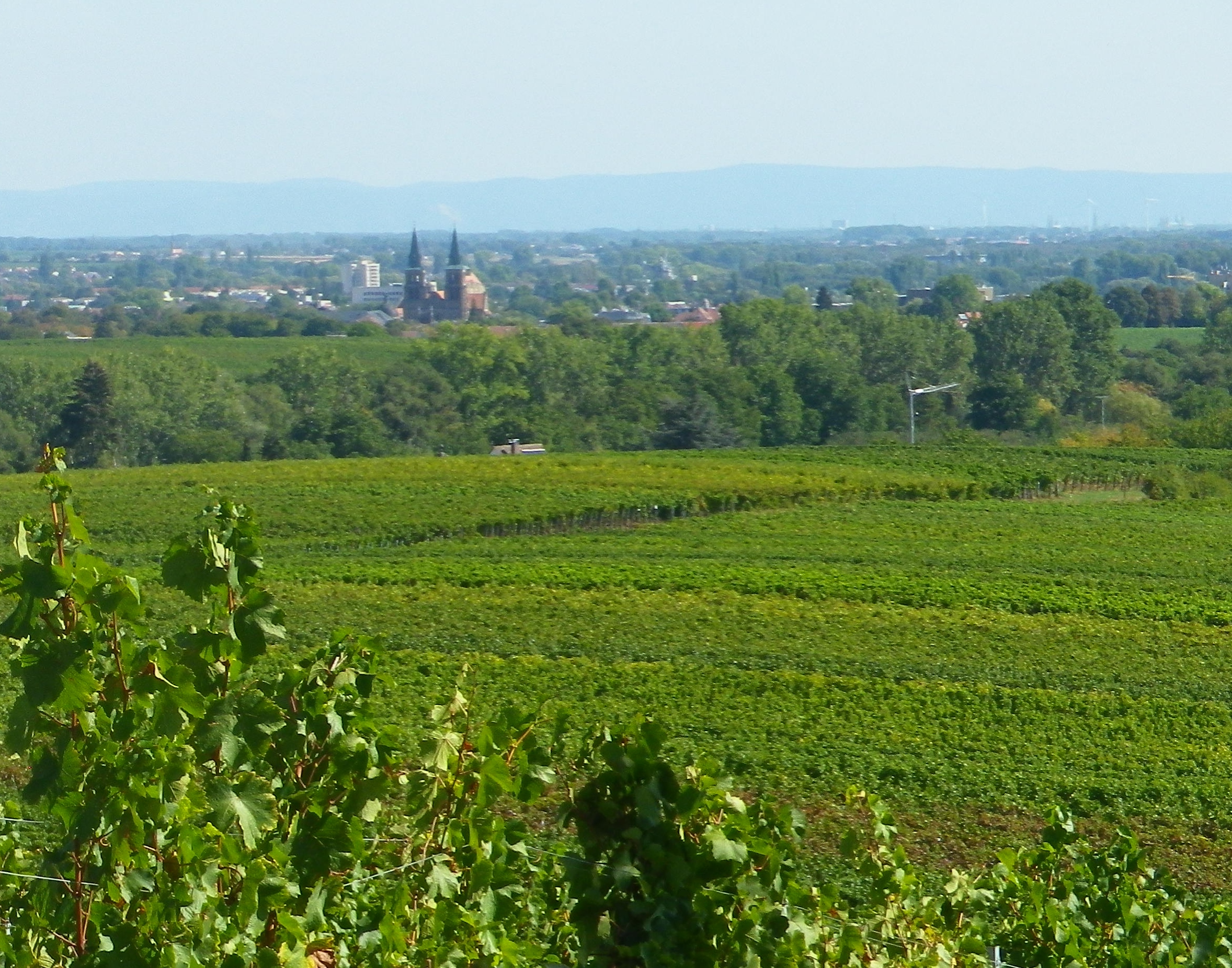
The occasional village provided opportunities for something to eat or drink. But the village of Nussdorf really stood out. Set in a sea of vines, this little village which once sheltered Roman-era vintners, really celebrated its viticultural heritage. Nussdorf’s unique wine education trail (Weinerlebnispfad), complete with picnic benches, a wading pool for aching feet (Kneipp), and a rest area, also partly served as the itinerary for this section of the Winzer Radrundweg. There were several sculptures celebrating the life of the vine, and chimes lined the trail, awaiting the inspirational touch of passersby to bring sound to the vineyard. Flowers, usually roses, marked the end of rows of vines. (Historically, vintners used flowers to lure insects away from the vines, thus protecting them.) Speaking of celebrating, in addition to hosting several wine festivals throughout the year, some enterprising local vintner also had what looked like a large prairie schooner (Planwagen), apparently rented by a group of partygoers, enjoying the local wines as they were drawn along the wine trail.
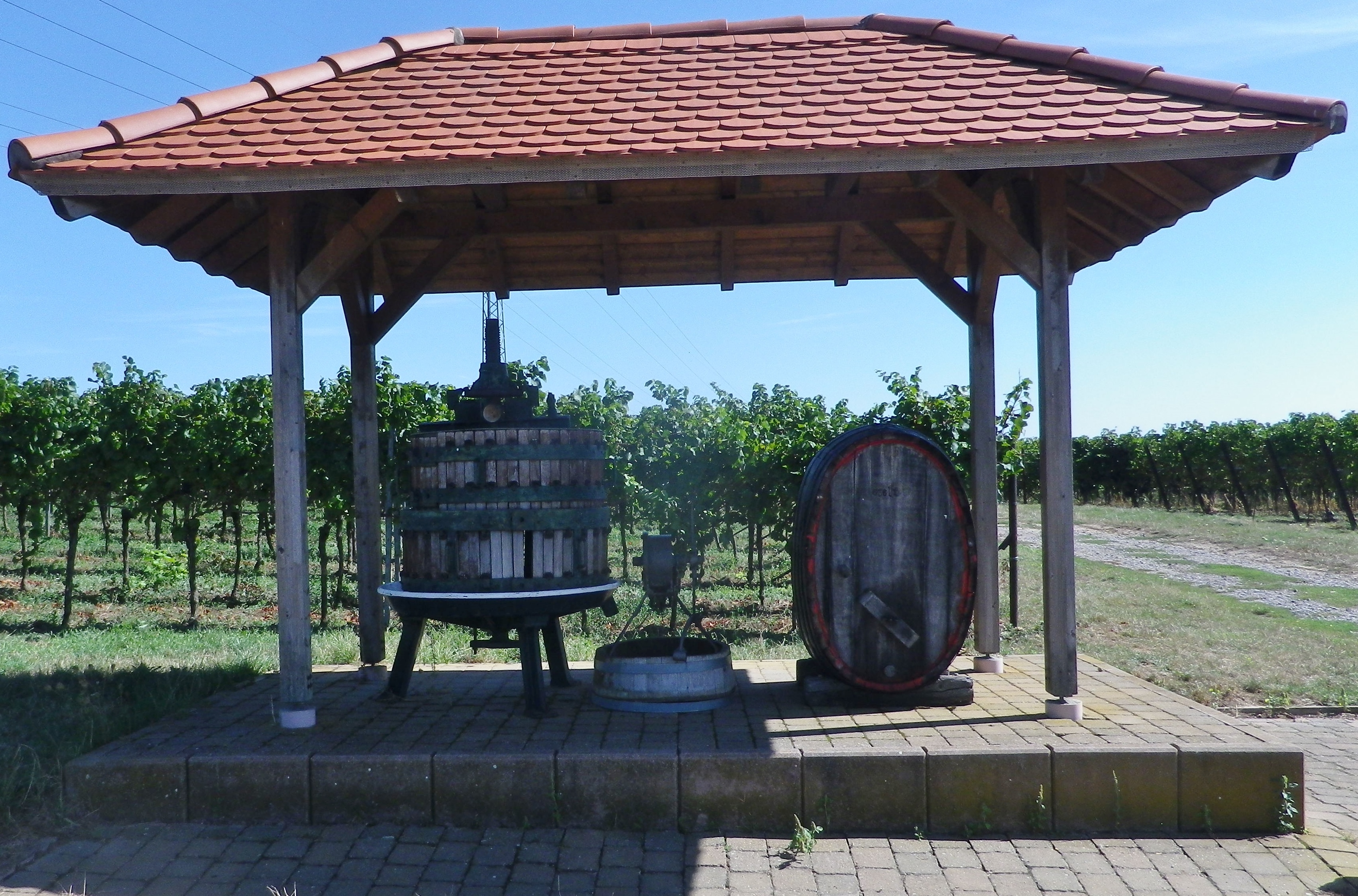
A good time on the trail was had by all that day, especially by me. This trail provided a wealth of sights and sounds, a variety of landscapes, and above all, a variety of wines to sample and enjoy!
